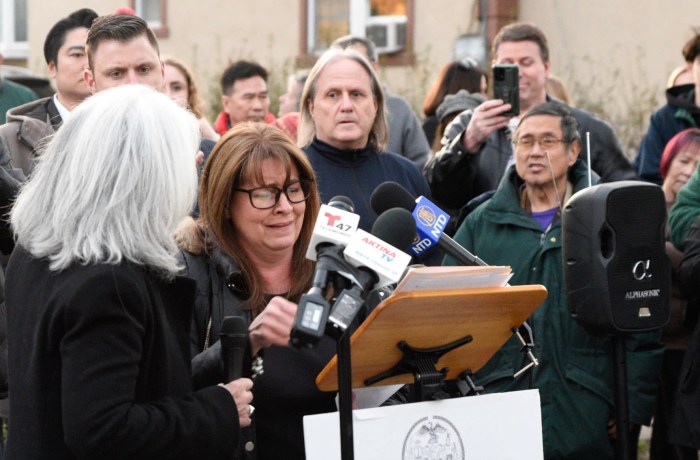By Sajan P. Kuriakos
It would not be too far from the truth to say that some 70 dragon boats from throughout the country will come alive this summer at the Flushing Meadows-Corona Park’s Meadow lake just before the annual race.
But you’d have to be a believer.
According to a 2,000-year-old Chinese tradition, once a boat is done racing, it is buried in the river bank until the next year when the 20-man craft, considered a living being, is ceremoniously resurrected for yet another race.
“But then you cannot really bury a boat in Flushing,” said Edmund Yu, a former dragon boat racer and an organizer of the Hong Kong dragon boat racing festival in Flushing. “I mean they’d steal it.”
Despite the restrictions on tradition, the boats in Flushing will, however, be brought to life by Buddhist monks in a special ritual just before the races.
Flushing has hosted Chinese dragon boat racing on the waters of Meadow Lake since 1991.
On Aug. 10 and 11, more than 90 teams from New York and across the country will come to Flushing to race.
In a grueling series of contests the winner will have to beat all other comers in each of three racing categories – the 1,000, 500 and 250 meters.
“The festival has also become one of the main competitive events among many dragon boat racing enthusiasts nationwide who have come to New York each time to race against each other in a test of paddling skills and stamina,” said Henry Wan, chairman of the festival, in a written statement.
The dragon boat teams in the United States come out of organized amateur clubs devoted to the sport, Yu said.
“The crew of a championship caliber-boat trains year round,” Yu said.
“In the winter they exercise on special equipment to improve their rowing. They also run.”
Dragon boat racing has its roots in the third century B.C. According to Chinese lore, Qu Yuan a reformist poet in the state of Chu, was banished from his home because his radical poems had displeased his king.
In exile Qu Yuan wandered the expanse of his country and its surrounding islands writing poetry about his lost home and about his concerns for his people.
In 278 B.C. Qu Yuan heard his home had been invaded. Unable to contain his grief, he drowned himself in a river.
According to legend, local fishermen raced out to the river in their boats and beat the water with their paddles to prevent the fish from eating the poet. But the fishermen could not rescue Qu Yuan.
To this day, organizers of the Flushing festival said, the fishermen in the outlying Hong Kong islands of Lantau, Lamma and Cheung Chau commemorate Qu Yuan’s death with dragon boat races.
Four days before the festival the boats are removed from their resting places in the sand and Buddhist monks ritually bring them back to life by attaching the dragon head and tail on the boat and painting the dragon’s eyes red.
The Hong Kong dragon boats scheduled to be featured in Flushing Meadows-Corona Park are 38 feet 10 inches long, 3 feet 6 inches wide and 17 inches deep.
The boat is made entirely of teak wood and has no metal fittings. The dragon head and tail are made of camphor wood.
These boats are made by Hong Kong-based master boat builders, Yu said. The highly decorative dragon head and tail are made by artisans.
The boats in Flushing Meadows will carry a crew of 20, Yu said. There will be 18 paddlers with one drummer keeping the beat and a steersman holding the boat on course.
The dragon boat races will kick off at Flushing Meadows Corona Park’s Meadow lake at 9 a.m. on both race days.
The event’s organizers have also scheduled programs in the park such as Chinese dances, Chinese paper cutting and folding and Chinese calligraphy to coincide with the boat races.

































